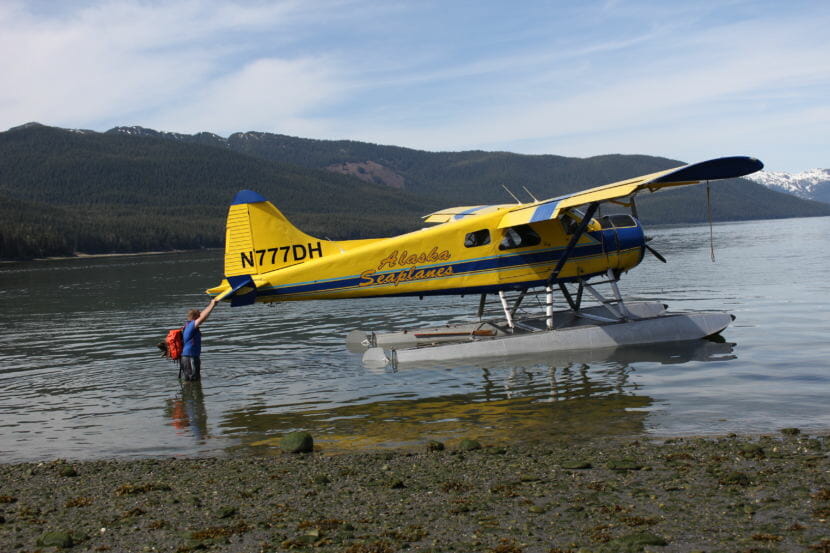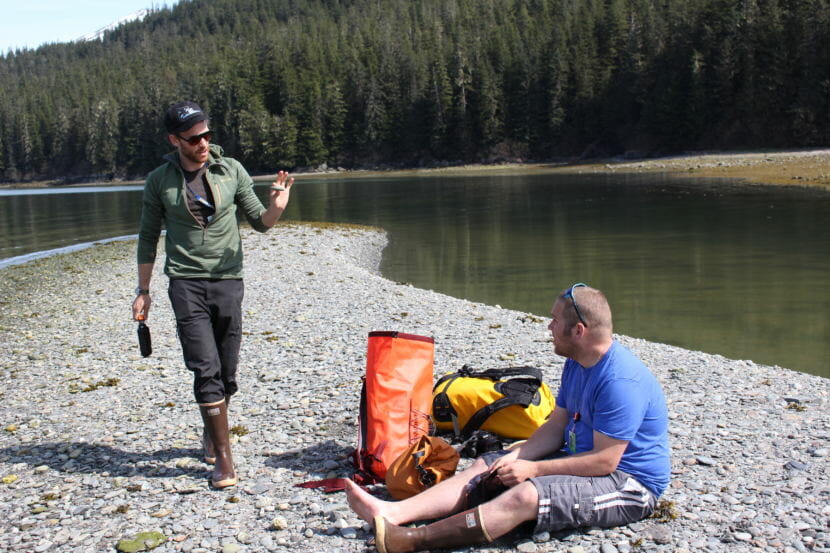
Southeast Alaska is projected to see upwards of one million tourists this year. Many of those visitors will venture into the wilder parts of the Tongass National Forest for a guided hike or bear viewing, and that requires a special use permit from the Forest Service. But as tourism increases and federal budgets shrink, a permitting backlog has been growing.
Dan Kirkwood, a guide with Pack Creek Bear Tours, recently took a float plane to a remote spot in the Tongass National Forest. But the purpose of his trip wasn’t to spot a bear.
“We’re here because this is an outstanding, cool location that we have the opportunity to explore in the Tongass,” Kirkwood said. “And we’re really excited about getting access to a new place. So we want to scope it out.”
The scenery includes a big broad meadow and rapids that will squirm with salmon when the fish spawn.
This is Kirkwood’s and his guiding partner’s first time here. They want to see if it’s a good place to bring small tours of up to five people: visitors who want to experience brown bear country up close with the safety of a guide.
“For us, this is the wilderness. This is a place that’s unfamiliar,” Kirkwood said. “But [for bears] this is main street. This is their living room. The trails in here having probably been used for centuries.”
But to be able to bring people into this bear’s house, Kirkwood must first receive what’s called a special use permit from the U.S. Forest Service, and he might he have bit of wait.
There’s a backlog of well over 6,000 of these permits nationally. That includes a variety of commercial interests. In the Tongass specifically, there are dozens of recreation outfits waiting to hear back.
Kirkwood wonders how the forest service will manage to process all of the special use permits, which seem to be piling up.
“I think that we just really need the forest service to really buckle down and focus on tourism and plan long term,” Kirkwood said.

The reason for the backlog has nothing to do with bears. Wildfires are burning a massive hole in the agency’s budget.
Twenty years ago, wildfires accounted for 16 percent of the forest service’s annual funds. In recent times, that number has ballooned to more than half of the budget, a phenomenon attributed to longer burning seasons due to climate change.
Patrick Shannon manages the Alaska Forest Fund for the National Forest Foundation, which was created in 2015 to help the forest service maintain its national lands in Alaska after funding continued to be slashed.
“What that has done is it’s taken away money the forest service could use, for instance, for recreation,” Shannon said.
Shannon is hopeful that more help is on the way. Congress recently granted the forest service the ability to tap into additional emergency funds.
“They haven’t identified where that other money is going to come from yet,” Shannon said. “But the first step is to give them the authority to spend other money.”
That won’t happen until 2020.
In the meantime, Congress did increase the forest service budget for this fiscal year. But it’s still too early to tell if it’s enough to compensate for the wildfire season to come and how that will shake out for recreation funding.
Packing up after scouting out the area, Dan Kirkwood concludes this spot in the Tongass has plenty to offer.
“We would definitely apply for permits here,” Kirkwood said. “It’s fabulous bear habitat. The scenery is off the charts.”
But Kirkwood is uncertain how long it will be before he can show it to tourists. According a regional forest service spokesperson, a special use permit can take up to two years.
And he doesn’t see the demand to explore these wilder places slowing down.




